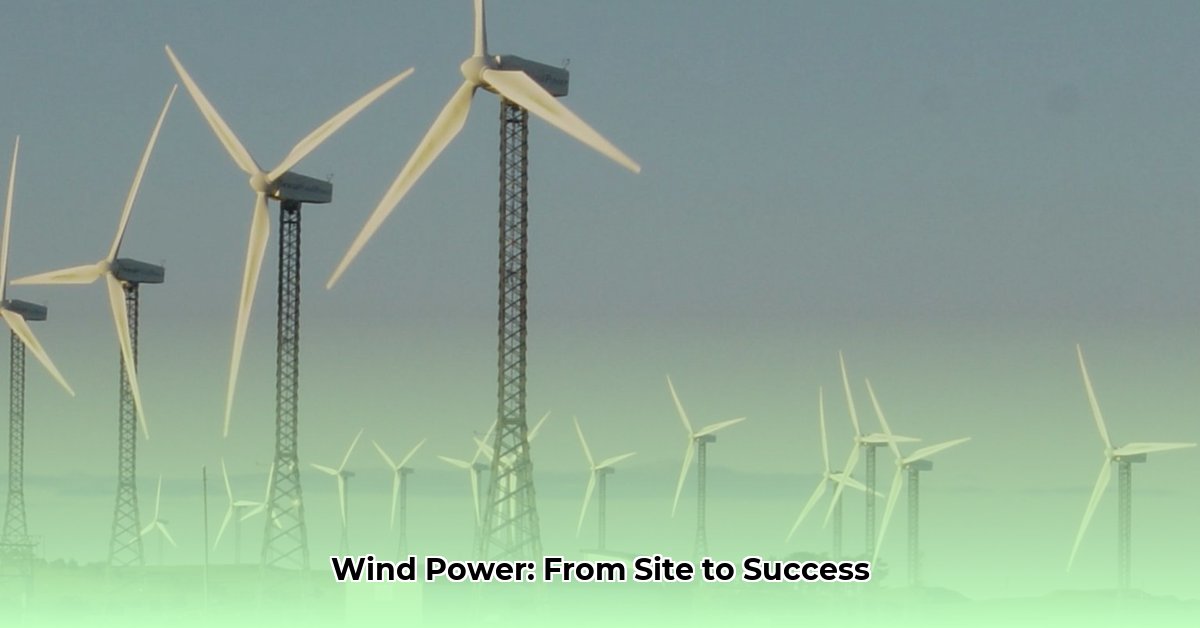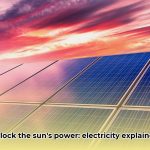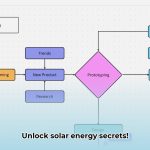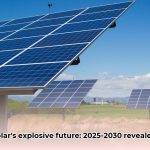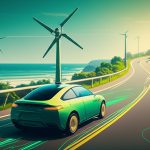Developing a wind farm is a complex undertaking, demanding meticulous planning and execution. This guide provides a comprehensive overview of the process, from initial site selection to ongoing operation and maintenance. Whether you’re a potential investor, a landowner, or simply curious about clean energy, this guide will offer valuable insights into the intricacies of wind farm development.
Harnessing the Wind: Site Selection and Resource Assessment
The journey begins with identifying a location with sufficient wind resources. This isn’t simply a matter of finding a breezy spot; it requires a rigorous assessment using sophisticated tools and techniques.
Wind Resource Mapping: Identifying Potential
Initial assessments rely on wind resource maps, such as those provided by the National Renewable Energy Laboratory (NREL). These maps provide a broad overview of wind potential across a region, highlighting areas worthy of further investigation. Think of them as a first step in prospecting for wind resources.
On-Site Measurement: Confirming the Potential
Promising areas then undergo on-site measurements using meteorological masts (met masts). These towers, equipped with specialized instruments, collect precise data on wind speed, direction, and consistency over time. This granular data is crucial for accurately predicting energy output and optimizing turbine placement. Local topography can significantly influence wind patterns, so on-site data often reveals nuances not apparent in broader wind maps.
Land Acquisition: Building Partnerships
Securing land rights is essential. This involves negotiating agreements with landowners, often through long-term leases. Transparency and open communication are key to establishing mutually beneficial partnerships. Community engagement is equally important. Early and frequent dialogue with local residents helps address concerns, build trust, and foster support for the project.
Powering Up: Project Financing
Developing a wind farm requires substantial investment. Understanding the financial landscape is crucial for project success.
CAPEX and OPEX: Understanding the Costs
Two primary cost categories define wind farm development: Capital Expenditures (CAPEX) and Operational Expenditures (OPEX). CAPEX represents the initial investment in turbines, foundations, grid connections, and construction. OPEX covers ongoing costs such as maintenance, repairs, insurance, and eventual decommissioning.
ROI and LCOE: Measuring Success
Return on Investment (ROI) and Levelized Cost of Energy (LCOE) are key metrics for evaluating project viability. ROI measures profitability relative to investment, while LCOE represents the average cost of generating one unit of electricity over the project’s lifetime. Factors influencing LCOE include turbine technology, capacity factor (the percentage of time the wind farm generates electricity), and financing costs.
PPAs: Securing Revenue
Power Purchase Agreements (PPAs) are long-term contracts that guarantee the sale of electricity at a predetermined price. PPAs provide a stable revenue stream, attracting investors and facilitating project financing. Key PPA considerations include contract length, price escalation, and offtake risk (the possibility that the buyer might not purchase all generated electricity).
Navigating the Regulatory Landscape
Wind farm development is subject to various regulations. Navigating this landscape requires careful planning and adherence to permitting processes.
Local, State, and Federal Regulations
Regulations exist at all levels of government. Local authorities address zoning, setbacks, noise limits, and aesthetics. State regulations focus on environmental protection and energy policy. Federal agencies like the FAA ensure turbines don’t interfere with air traffic.
Key Regulatory Considerations
- Environmental Impact: Thorough assessments are conducted to minimize impact on wildlife, habitats, and ecosystems.
- Noise Pollution: Studies evaluate and mitigate potential noise from turbine operation.
- Visual Impact: Regulations address turbine height and visibility, particularly in scenic or historically significant areas.
- Public Input: Community engagement and public hearings provide opportunities for feedback and address concerns.
- Grid Connection: Approvals are required to ensure safe and reliable integration with the existing power grid.
The Permitting Process
The permitting process involves project conceptualization, application preparation, agency review, public comment, permit issuance, and ongoing compliance monitoring. Early and open communication with stakeholders, including community members and regulatory agencies, is vital for navigating this process effectively.
Building and Operating: Construction and Maintenance
Once financing and permits are secured, construction begins. This phase involves site preparation, turbine assembly, electrical infrastructure installation, and commissioning (testing and verification of all systems). Once operational, ongoing maintenance is crucial for maximizing uptime and ensuring long-term performance. Regular inspections, repairs, and performance monitoring are essential.
The Future of Wind Energy
Wind energy is a dynamic field. Ongoing research and technological advancements continuously improve efficiency and reduce costs. Staying informed about the latest trends and innovations is essential for successful wind farm development. Resources like the U.S. Department of Energy’s WINDExchange and the ACP provide valuable information on current regulations, best practices, and emerging technologies. While challenges exist, the benefits of wind energy – clean power, economic development, and a sustainable future – make it a compelling investment.
- How To Make Electricity At Home With Water Using DIY Micro-Hydro - December 7, 2025
- How to Generate Electricity from Water at Home for Off-Grid Power - December 6, 2025
- Small Scale Hydropower Brings Sustainable Energy to Rural Areas - December 5, 2025
